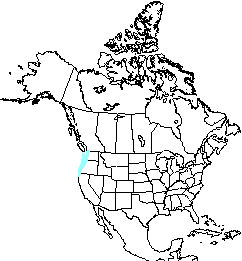|
Townsend's mole Scapanus townsendii |
 |
 |
| Identification: Mass: 96-164 g Body length: 179-237 mm Tail length: 33-53 mm Colour: slate black Young: 2-6 per litter Habitat: moist well-drained soils in riparian areas, meadowns and cultivated fields Diet: primarily earthworms; also eats sowbugs, insects, tubers and some root crops |
|
Natural History: Townsend's moles are the largest and heaviest North American talpids. Armed with robust claws, S. townsendii are accomplished burrowers that primarily construct extensive, shallow (5-20 cm) tunnel systems. Little is known on the activity pattern and behaviour of this mole, although it is thought they are primarily nocturnal. While quantitative data on this aspect of their biology are lacking, studies on their food habits suggest that plant bulbs and tubers may represent a higher proportion of the diet than those of other mole species. |
|

|
Distribution: More restricted in distribution than the coast mole, Townsend's mole is typically a lowland species that occurs from extreme northwestern California in the south, and upwards along the coastal regions of Oregon and Washington. The extreme northern range of the species barely places it into the southernmost reaches of southwestern British Columbia, where it is protected. |
| Selected Readings: |
Carraway, L.N, L.F. Alexander, and B.J. Verts. 1993. Scapanus townsendii. Mammalian Species, 434:1-7. Moore. A. W. 1933. Food habits of Townsend and coast moles. Journal of Mammalogy, 14:36-40. Sheehan, S.T. and C. Galindo-Leal. 1996. Status Report on Townsend's Mole (Scapanus townsendii) in Canada. Committee on the Status of Endangered Wildlife in Canada (COSEWIC). 45 pp. |

|

